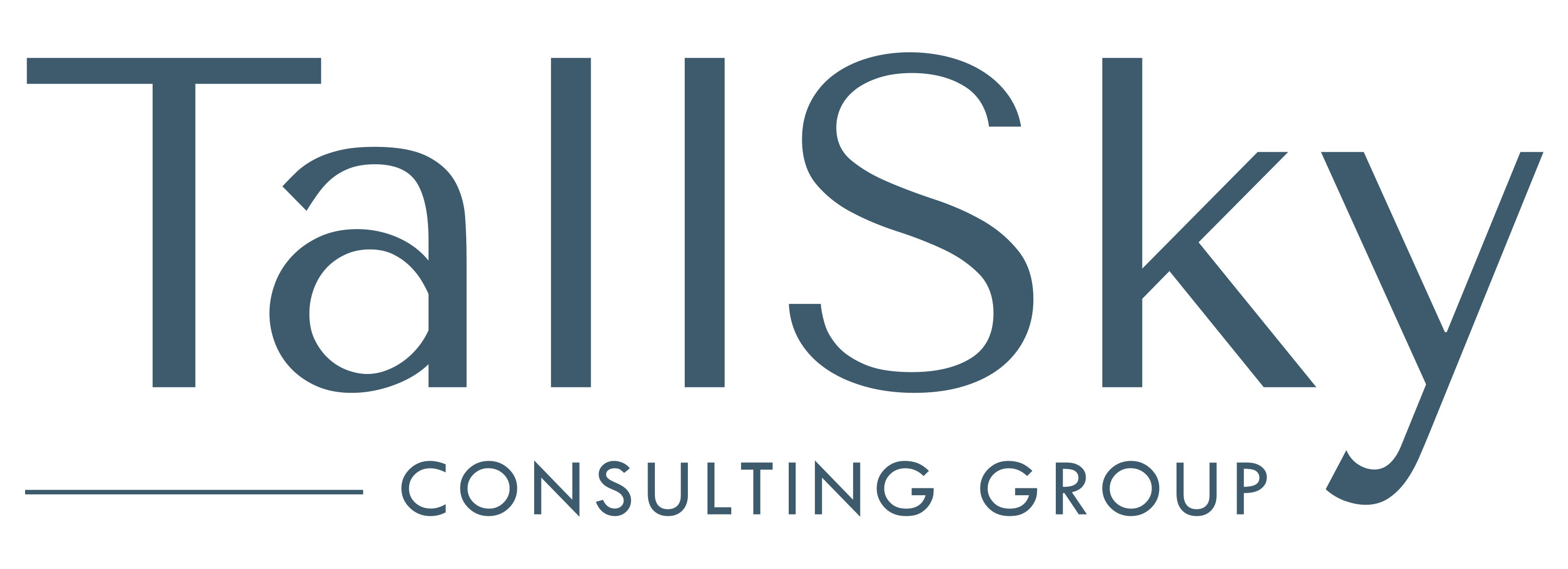
We’re sure, like us, you’ve been finding all kinds of good advice on how to be productive and happy while working from home. The following tips and tricks can be added to the list you’re creating. We would love to hear from you about how your team is coping with the changing way we work, how you are connecting, and ways you have found to keep creative, remain productive, and stay healthy.
This week’s topics for you:
- Tips for employers who are coordinating work from home processes for their employees
- Tips for employees who are setting up and working from their new home office
- Think “rainy day” tips for safeguarding discretionary spending
- BC Coronavirus update links
Tips for employers who are coordinating work from home processes for their employees
Company Policy: if you don’t already have a Remote Work Policy, consider developing one to provide employees with guidelines on this process. What is the process for approving who works from home? How can you set up best practices for use of equipment, communication processes and maintaining productivity? Even if your team is already at home, this can be implemented and will help provide the structure required for everyone to be successful.
Work Plans: To help organize the work and maintain accountability, Managers need to establish weekly goals for their team and ensure there are clear objectives.
Communication: Set up core company hours for your teams. This provides your team with a guideline on when they need to be online and available for email, conference calls, video chats, etc. Use various methods of communication. Email can often lead to confusion, misinterpretation or frustration if it is the only means of discussions. Be clear with the objective of your communication; are you connecting to brainstorm ideas, follow up on specific tasks, or simply checking in to see if they are okay.
Connect: Whether your team is working from home or on a temporary layoff, don’t rely solely on social media platforms to stay connected. As a business owner or manager, reach out by phone to have 1:1 conversations with each employee on a weekly basis as a minimum. If they are working from home, check in to see what’s working well, what challenges they may be encountering, and what support they need from you. This three-question structure to your conversations will help maintain open lines of communication and keep talented employees engaged with you and your company. When you check in, make sure you ask how they are doing personally. Employees working from home may be struggling with the isolation. Employees who are temporarily laid off may be feeling the very real effects of financial distress or depression, impacting their mental and physical health. Be kind and caring to each other.
Security of Information: Employees working from home need to be aware of their obligations to protect sensitive business data and keep work-related materials confidential and secure. They need to comply with guidelines regarding the proper use of company equipment and information technology required by the company.
Safety: Consider the requirements for workers’ compensation and provide guidelines for employees working at home. Any injuries acquired in the employee’s designated home work area, during agreed work hours and while performing job functions must be reported immediately under the same guidelines the company would require in the workplace.
Tips for employees who are setting up and working from their new home office
Develop a Morning Routine: Starting work can be difficult, especially in the comfortable environment of home. Make sure to create a morning routine that guides you into the flow of work with ease. Have a shower and get dressed; working in your pyjamas is tempting, but may not be an effective way to jump-start your work day. Get a fresh cup of coffee or do a short workout (check out this 7-minute workout). Whatever you would normally do to be ready for your work day can still be your routine so you can plan to be at your “desk” at the same time you would normally arrive at the office.
Setting up your Workspace: While the quality of your work environment is important, the location of your workspace should also be a key focus for your working happiness. Ideally, maintain your home workspace in a single location and try to ensure there is natural light. Enjoying a beam of sunshine or the birds in a tree can give you a moment of pause from your computer screen. As much as you may like to use your comfortable living room couch, a better working location is a table or ideally a desk.
Be Distraction-Free: To continue ensuring that your work environment is distraction-free, ask the people in your home to respect your working space or use noise-cancelling head phones to help maintain your focus. Of course, family time is important, and a scheduled break for family time can be very useful for your productivity. Nevertheless, while you work, try to maintain a quiet, stress-free environment.
Schedule Breaks: Even though you’re working from home, make sure to set a schedule for your coffee and lunch breaks to allow for a good work-life balance. Respect your company’s policy on breaks; however, if you need to take more frequent breaks, do so when needed. Working on a single task or assignment for too long often leads to a poor quality of work. Taking relieving breaks throughout the day ensures mental clarity and increases the caliber of your work. And if you need a longer break…
Walk around the block: Taking your dog or yourself for a walk or simply getting a breath of fresh air is important for productivity. Please respect social/physical distancing guidelines and cross the street for your neighbour’s protection. If your neighbour is out on their balcony, perhaps break out in song like the Italians do!
Communication: For the majority of your time working from home, you will be isolated. Make sure to not only increase communication with your co-workers and/or boss, but add detail to your questions/comments by checking in on each other or sharing some news. Remember, words can be lost in translation over text/email and can easily be misinterpreted by others. Reach out by phone or video, when you need to communicate complex issues.
Ask for Help: Working alone all day can be difficult. If you get stuck on a given task, feel free to reach out to a colleague or friend for help.
Utilize Video-Calling and Apps: Speaking face-to-face is better than by text/email, so use your favourite tool (FaceTime, Skype or Zoom, etc.) to check in with your manager or co-workers. This leads to a higher level of productivity and better flow of work. Many teams are increasing their use of Slack, Teams or other apps. to communicate in a way similar to an office “drive-by” in the hall, or if you were stopping at someone’s office door. Some are using group chats to share who’s delivering groceries, ideas for parents with kids at home, and exercising together. We may learn whole new ways of working together as teams to support our well-being!
Use a VPN: Make sure to use a VPN whenever you are utilizing a public network to protect your information and computer from hackers or viruses.
Finish Your Workday with a Routine: Just as your morning routine helped jump-start your working day, ensure you create an end-of-day routine. Develop a system that signals the end of a workday for yourself and your family. It is a great way to signal the start of something fun. Reconnecting with your family/friends, a personal hobby, a favourite podcast, or a walk in the park, are all great ways to decompress from your workday.
Relax and Don’t Be Too Hard on Yourself: Yes: maintain regular hours, stick to a schedule, and create a great working environment, but be positive and have fun. Take a break, take a breather, smile. You have the freedom to work from home — take advantage of it!
Think “rainy day” tips for safeguarding discretionary spending
Given the fact that we are unsure how long the COVID-19 outbreak will take before our lives return to normal, we all owe it to ourselves to watch our spending and try to think “rainy day” with respect to our earnings. Here are a few helpful ideas to conserve our ‘pennies’:
Be thoughtful about spending: Understand and track where you are spending your money at this time. Understand the difference between what you want to do and what you can afford to do. Try to minimize your expenses and cut out discretionary spending. Personally, if Starbucks was one of your luxury items, consider how to make delicious speciality coffees at home! Think about the money we’re saving now that they are closed.
Renegotiate contracts: If you have contracts underway, or about to renew, try to re-negotiate the terms for better pricing.
Ask for assistance: Many of us don’t have an emergency fund for our home or business – three to six months operating or living expenses and you are closed or employees are temporarily laid off, be informed about federal and provincial funding. Reach out to your financial institution or landlord to see if you can get a break on your payments for a brief period.
Meals: Prepare your food with bulk batching in mind and freeze leftovers for a rainy day. Plus, remove yourself from temptation. If eating out or ordering in is your default, start cooking and save the orders from your favourite local restaurant (assuming they are still open) to the weekends.
Clean out your closet: Sell goods you no longer need or want online or share them with the less fortunate.
Credit Cards: Minimize the use or number of credit cards you have and use. Perhaps put some away to avoid the temptation to use them, or simply use fewer to consolidate your expenses and payments.
BC Coronavirus update links:
If you or an employee believes they have symptoms or have been in contact with someone who is known to have the illness, the B.C. Centre for Disease Control (BCCDC) says the first step is to use its online assessment tool. If the results suggest you should do so, call your health-care provider, or the health line at 811.
The same applies if you have symptoms and have returned from — or been in contact with someone who has returned from — an area with widespread community transmission of the illness. The BCCDC says: “If you have no symptoms, mild symptoms or you are a returning traveller self-isolating at home, you do not require a test.”
What to do if you’re home sick with COVID-19:
People who have been tested are asked to wait 72 hours before calling the negative results line.
For non-medical questions related to social distancing, travel and accessing government assistance, you can call the province’s new, dedicated coronavirus hotline, 1-888-COVID19 (1-888-268-4319).
You can find B.C.’s latest coronavirus updates here.
Our team at TallSky Consulting is here to support all of your HR requirements and we share your desire to enhance and protect the health and well-being of our communities and workplaces.
Please feel free to contact us for assistance or support by email or phone at any time. Stay healthy, practice social and physical distancing and let’s all work together to “Plank the curve”.
PDF Version of Tips from TallSky March 24 2020
DISCLAIMER: The information is provided as general information on these topics, and given the rapidly evolving environment, they may not be relevant with recent updates or changes on the topic. These materials are not meant to be a substitute for specific legal advice. Please do not rely solely upon this information for making decisions regarding employees in your workplace.
